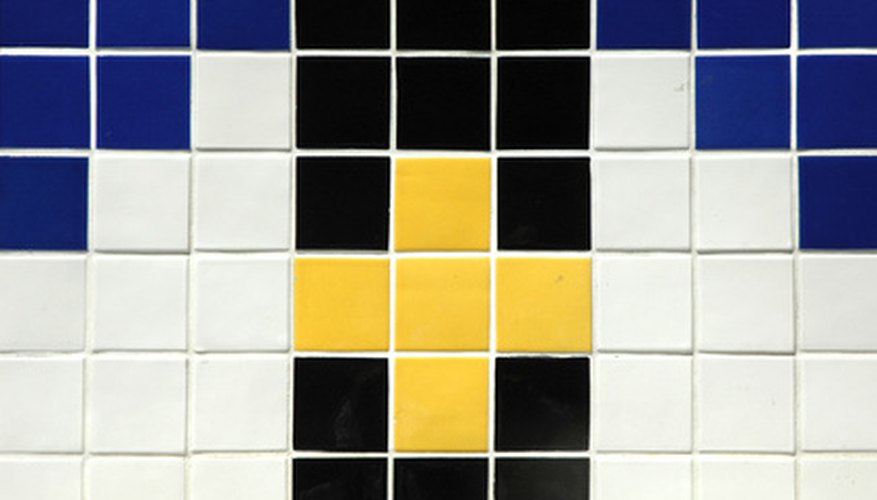Porcelain tile provides a durable floor covering and works well on walls and backsplashes. Most porcelain tiles have a glossy glaze that prevents the porcelain from absorbing stains permanently, but this glaze can be scratched by harsh abrasives. Paint drips and spills can't be scraped off, or the tile may suffer damage. Since the glaze prevents paint from penetrating the tiles, it can be removed but it requires time, effort and care.
- Porcelain tile provides a durable floor covering and works well on walls and backsplashes.
- Most porcelain tiles have a glossy glaze that prevents the porcelain from absorbing stains permanently, but this glaze can be scratched by harsh abrasives.
Wipe the tile with a dampened lint-free cloth, removing any surface dust.
Dip a clean rag in paint thinner. Dab the thinner onto the paint stain, taking care not to get the thinner onto other areas of the tile or grout. Rub the thinner into the paint. The paint either wipes up or becomes soft.
Scrape of as much of the softened paint as possible with a plastic knife. Avoid sharp, hard scrapers as these may damage the glaze.
Wipe up the remaining paint with the thinner. Alternately, combine 2 or 3 tbsp of baking soda with 1 cup of water and pour the mixture on the tile. Scrub lightly with a clean cloth. The mild abrasiveness of the baking soda helps remove the remaining paint.
Rinse the area with clear water. Wipe dry.
- Scrape of as much of the softened paint as possible with a plastic knife.
- Rinse the area with clear water.
TIP
Test paint thinner on a hidden area of the tile first to ensure it doesn't remove the glaze.
WARNING
Avoid acidic cleansers, including vinegar, as these can etch the porcelain.
